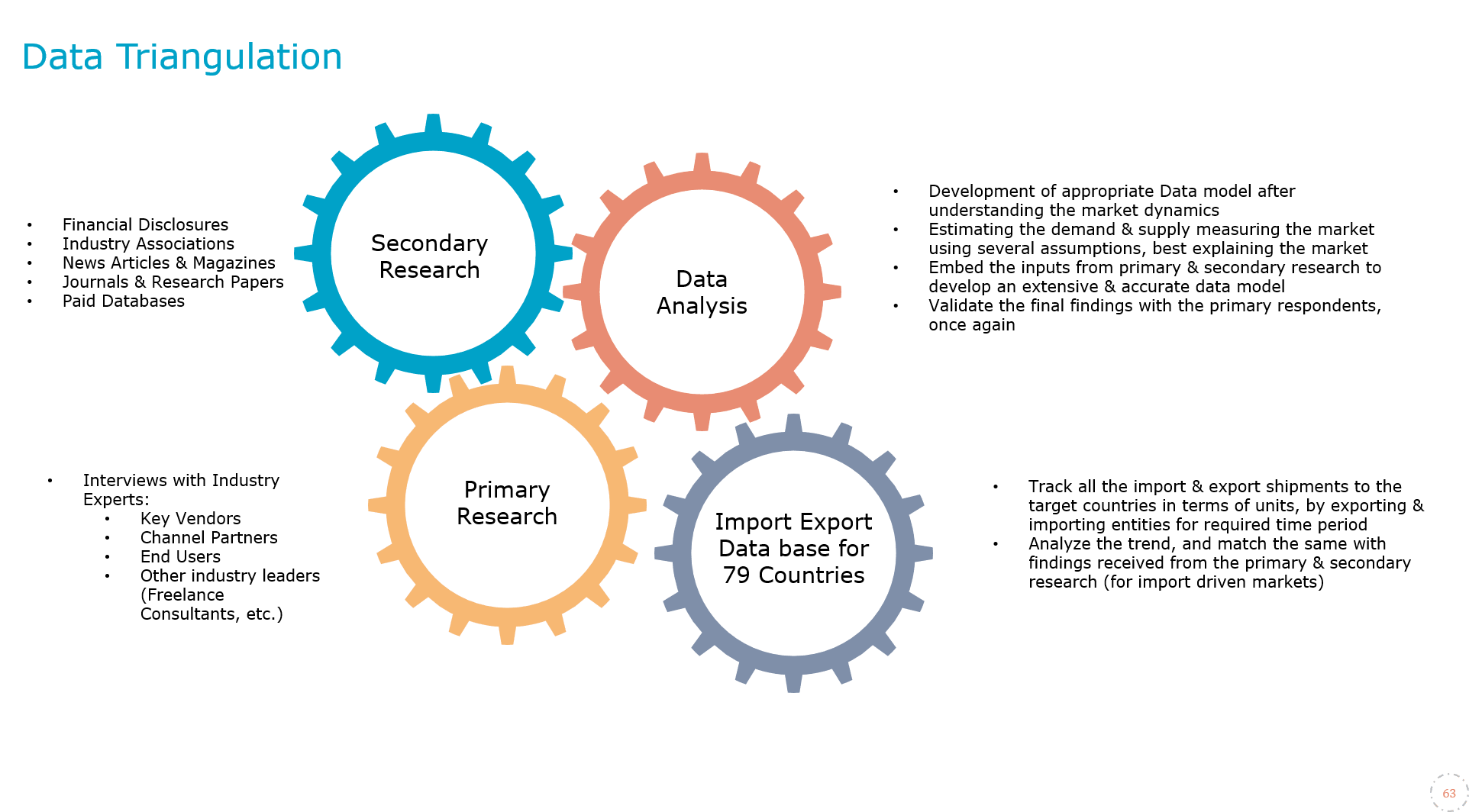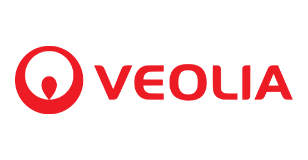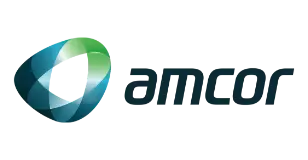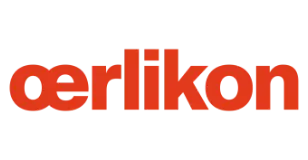
Global Clinical-Grade Wearable Device Market Research Report: Forecast (2023-2028)
Global Clinical-Grade Wearable Device Market Report - By Device Type, (Diagnostic Device (Vital Sign Monitor (Heart rate Monitors, Activity Monitors, Pulse Oximeters, Blood Pressur...e Monitors, Others (Spirometers, Electrocardiographs, etc.)), Sleep Monitoring, (Sleep Trackers, Wrist Actigraphs, Polysomnographs), Electrocardiographs Fetal & Obstetric Devices, Neuromonitoring Devices (Cerebral Oximeter, Electroencephalographs, Electromyographs), Therapeutic Devices (Pain Management, Quell Device, Neurostimulation Device), Insulin Monitoring Devices (Insulin Pumps), Rehabilitation Devices (Gyroscopes, Accelerometers, Magnetometers), Respiratory Therapy Devices (Ventilators, Portable Oxygen Concentrators, Possible Pressure Airway Devices))), By Device Site, (Handheld, Headband, Shoe Sensors, Strap/ Bracelet), By Application, (Home Healthcare, Remote Monitoring, Sports & Fitness), and Others Read more
- Healthcare
- May 2023
- Pages 178
- Report Format: PDF, Excel, PPT
Market Definition
Clinical-Grade wearables are the technology-based devices majorly used in healthcare to monitor the status of patients’ health by attaching the wearables to their bodies. The Clinical-Grade medical devices include fitness trackers, blood pressure monitors, and biosensors. These devices tend to collect health & fitness data, which gives an indication to the user regarding their health report based on their day-to-day activity. Additionally, the demand for Clinical-Grade wearable devices arises from the geriatric population owing to the requirement for consistent monitoring of their health status.
Market Insights & Analysis: Clinical-Grade Wearable Device Market (2023-28):
The Global Clinical-Grade Wearable Market is projected to grow at a CAGR of around 25% during the forecast period, i.e., 2023-28, due to the factors such as growing health awareness among the population, rising diseases, sustainable investments in the public health systems, etc. In historical years, the number of cases of chronic diseases in countries such as the US, the UK, and others has surged, necessitating the use of Clinical-Grade wearable devices for continuous health monitoring. The growing number of health issues & the flexibility provided by the devices have expanded the market for Clinical-Grade wearables.
Several countries, such as Australia, funded the companies to focus on technology-driven health products. Additionally, the funds encouraged the healthcare industry to digitalize their working processes, resulting in greater adoption of technology-based products. Besides, countries such as the UK, Israel, New Zealand, etc., have a healthcare shortage, forcing patients to rely on wearable devices to consistently monitor their health. Due to a lack of workforce, such as nurses, and a shortage of hospital beds, consumers have shifted to homecare health monitoring, boosting the market for Clinical-Grade wearable devices.
| Report Coverage | Details |
|---|---|
| Study Period | Historical Data: 2018-21 |
| Base Year: 2022 | |
| Forecast Period: 2023-28 | |
| CAGR (2023-2028) | 25% |
| Regions Covered | North America: US, Canada, Mexico |
| Europe: Germany, The UK, France, Spain, Italy, Rest of Europe | |
| Asia-Pacific: China, India, Japan, South Korea, Australia, Rest of Asia-Pacific | |
| South America: Brazil, Argentina, Rest of South America | |
| Middle East & Africa: The UAE, Saudi Arabia, South Africa, Egypt, Rest of MEA | |
| Key Companies Profiled | Abbott Laboratories, Siemens Healthcare GmbH, Koninklijke Philips N.V., Omron Corporation, Sotera Wireless, Everist Health, Polar Electro, Zephyr Technology Corporation, Intelesens Ltd, Fitbit Inc., LifeWatch AG., Garmin, Contec Medical Systems Co. Ltd., Vital Connect, Dexcom, Inc., Medtronic Plc, Polar Electro, Ge Healthcare, and Others (Preventice Solutions, Inc., Covidien, etc.) |
| Unit Denominations | USD Million/Billion |
Several countries, such as Australia, funded the companies to focus on technology-driven health products. Additionally, the funds encouraged the healthcare industry to digitalize their working processes, resulting in greater adoption of technology-based products. Besides, countries such as the UK, Israel, New Zealand, etc., have a healthcare shortage, forcing patients to rely on wearable devices to consistently monitor their health. Due to a lack of workforce, such as nurses, and a shortage of hospital beds, consumers have shifted to homecare health monitoring, boosting the market for Clinical-Grade wearable devices.
Furthermore, as these devices offer users flexibility & ease of use and do not require consumers to stay in hospitals, therefore individuals rely on them to monitor their health at home. Furthermore, the impact of consumer behavior has permeated the field of medical applications such as diagnosis, monitoring, and, to a lesser extent, treatment of chronic diseases. As a result of the widespread adoption of devices in the healthcare industry, the market for Clinical-Grade wearables is expected to expand in the forecast years.
Clinical-Grade Wearable Device Market Driver:
Rising Demand for Incessant Health Monitoring for Diabetes & Related Health Issues: Over the past few years, there has been an increase in the population suffering from diabetes, thereby generating the demand for Clinical-Grade wearable devices for examining glucose levels at regular intervals of time. According to World Health Organization, over 422 million people are suffering from diabetes, globally, which leads to over 1.5 million deaths per year. Consequently, patients use glucose-monitoring wearable devices and insulin pumps to keep track of their sugar levels and deliver insulin precisely at designated times. This helps patients maintain their blood sugar levels efficiently.

Further, health concerns such as diabetes, blood pressure, etc., play a vital role in the demand for Clinical-Grade wearable devices since patients require monitoring to reduce the risk of long-term complications such as nerve damage, heart disease, etc. Therefore, these health-related issues have positively impacted the global market for Clinical-Grade wearables, owing to the flexibility and accuracy these wearable devices provide to patients suffering from illnesses.
Clinical-Grade Wearable Device Market Possible Restraint:
Expensive Device Prices & Effective Healthcare Infrastructure: Due to the incorporation of cutting-edge technologies such as artificial intelligence (AI), biosensors, and others, the price range for Clinical-Grade wearable devices is comparatively higher, making the devices unaffordable in countries with low per capita income. According to Unicef, there are over 144 low & middle-income countries, and the population in these countries relies on traditional check-ups to stay updated on health issues owing to the high or unaffordable prices of wearable devices. The prices of these wearable devices are comparatively higher due to the technologies used in their manufacture. As a result, there is a limited market for Clinical-Grade wearable devices in low & middle-income countries.
In some countries such as Brazil, Italy, etc., the government has set up funds to grant people free primary healthcare visits, therefore the majority of the population relies on the national healthcare systems. Moreover, the lower or almost negligible hospital fees have made the patients more dependent on in-hospital visits rather than relying on wearable devices. Further, a section of the population is still skeptical about the results shown by the devices. Thus, they rely on direct one-on-one consultations with doctors concerning health issues, restraining the demand for Clinical-Grade wearable devices.
Clinical-Grade Wearable Device Market Growth Opportunity:
Collaboration Between the Healthcare & IT Sectors for the Innovation of Wearable Devices: Healthcare companies & IT companies, such as Google, etc., have paired up together to bring innovation in the field of technology & healthcare through the amalgamation of medical devices & tech-based products. Companies have collaborated to digitize the healthcare system, along with wearable devices that monitor health consistently. These incorporations would help the companies to widen their research area & complement each other’s product folio, thereby increasing the accuracy of these products. IT companies have also partnered with electronic device companies to incorporate technology with devices & medical science.
Additionally, wearable medical devices have the technologies such as sensors & actuators that help to monitor health and get consistent health updates. Further, these partnerships would expand the market for Clinical-Grade wearables since the incorporation would bring in more accuracy in the products and thereby heighten the reliance on these products.
Clinical-Grade Wearable Device Market Trend:
Advent of Technologically Advanced Wearable Devices Augmented the Market Growth: Companies are introducing new and highly innovative products for the consistent and accurate monitoring of health. They have been launching new series & product ranges for medical wearable devices as a result of constant technological innovations. These innovations tend to provide greater ease & flexibility to consumers, which drives the Clinical-Grade Wearables market globally. For instance:
- In 2022, Apple Inc. launched a new Apple Watch Series 8 in India, which offers the ECG app & various features related to women's health. The two-sensor temperature sensing technology administered the ovulation estimates. Further, new crash detection technology also alerts emergency contacts of the user or nearby facilities in case a crash is detected.
Therefore, the rising trend of incorporating advanced technologies to cater to health-related problems is the primitive reason for the demand for Clinical-Grade wearable devices in the coming years.
Clinical-Grade Wearable Device Market (2023-28): Segmentation Analysis
Based on Device Type:
- Diagnostic Device
- Vital Sign Monitor
- Heart rate Monitors
- Activity Monitors
- Pulse Oximeters
- Blood Pressure Monitors
- Others (Spirometers, Electrocardiographs, etc.)
- Sleep Monitoring
- Sleep Trackers
- Wrist Actigraphs
- Polysomnographs
- Electrocardiographs Fetal & Obstetric Devices
- Neuromonitoring Devices
- Cerebral Oximeter
- Electroencephalographs
- Electromyographs
- Vital Sign Monitor
- Therapeutic Devices
- Pain Management
- Quell Device
- Neurostimulation Device
- Insulin Monitoring Devices
- Insulin Pumps
- Rehabilitation Devices
- Gyroscopes
- Accelerometers
- Magnetometers
- Respiratory Therapy Devices
- Ventilators
- Portable Oxygen Concentrators
- Possible Pressure Airway Devices
- Pain Management
Among them, Diagnostic Devices are anticipated to hold the major market share in the Global Clinical-Grade Wearables market, owing to the rising popularity of Vital Sign Monitoring devices. Among the vital sign monitors, the demand for heart rate monitors is increasing significantly due to the growing prevalence of hypertension, owing to which, there is a constant need for patients to track their blood pressure levels to avoid health complications. Additionally, respiratory diseases are one of the leading causes of mortality worldwide & have been surging the demand for medical devices such as oximeters, etc. Hence, increasing the necessity for vital sign monitoring devices to track their pulse rate & oxygen saturation levels, which is leading companies to introduce improved monitors for their customers.
Besides, Neuromonitoring Devices also held a considerable share in the Global Clinical-Grade Wearables market, owing to the surging awareness among consumers about neurological wearables & their capability to monitor individuals' cognitive capabilities. Further, the rising cases of migraine & other neurological diseases also support the demand for wearable neuromonitoring devices worldwide. Consequently, the growing prevalence of neurological disorders & their ability to monitor everyday brain activity is projected to enhance the growth in demand for this devices in the forecast years as well.
Based on Device Site:
- Handheld
- Headband
- Shoe Sensors
- Strap/Bracelet
Of them all, Straps/Bracelets are estimated to acquire a major share in the Global Clinical-Grade Wearables market, owing to the rising popularity of Bluetooth-connected smartwatches worldwide. Smart bracelets with functions similar to smartwatches have become increasingly popular among individuals due to their convenience & competitive pricing compared to other wearable devices.
Further, the rising development & availability of mobile apps that are compatible with strap/bracelet medical wearables allow data recording & display, allowing consumers to track their health conditions. These include heart rate monitoring, calculation of calories, blood pressure measurement, step management, motion tracking, and sedentary reminders, among others, which notably help individuals to monitor their health statistics.
Clinical-Grade Wearable Device Market (2023-28): Regional Projections
Geographically, the Global Clinical-Grade Wearables Market expands across:
- North America
- South America
- Europe
- The Middle East & Africa
- Asia-Pacific
Of all the regions across the globe, North America acquires the majority of the share due to the presence of technological companies & digitalized healthcare infrastructure. The digital transformation of healthcare in North America has contributed to the growth of the Clinical-Grade Wearables market there. The prevalence of neurological disorders in the country has escalated the demand for wearable neuro-monitoring devices. According to the Pan America Health Organization, in 2019, the US had the highest premature mortality rate due to neurological disorders. Therefore, there is a requirement for Clinical-Grade wearable devices such as activity monitors, insights watches, etc., for consistently monitoring health conditions & preventing further health complications.
Clinical-Grade Wearable Device Industry Recent Development:
- 2022: Medtronic plc. announced a strategic partnership with company BioIntelliSense, to monitor the US hospitals for 30-day post-acute hospital-to-home distribution rights of the BioButton multi-parameter wearable for straight, connected monitoring.
- 2022: Abbott announced the development of a new consumer bio wearable, Lingo, primarily built to detect critical body signals, like ketones, glucose, and lactate, helping people better understand their general health & take the required action.
Gain a Competitive Edge with Our Clinical-Grade Wearable Device Market Report
- Global Clinical-Grade Wearables Market Report by MarkNtel Advisors provides a detailed & thorough analysis of market size, share, growth rate, competitive landscape, and key players. This comprehensive analysis helps businesses gain a holistic understanding of the market dynamics & make informed decisions.
- This report also highlights current market trends & future projections, allowing businesses to identify emerging opportunities & potential challenges. By understanding market forecasts, companies can align their strategies & stay ahead of the competition.
- Global Clinical-Grade Wearables Market aids in assessing & mitigating risks associated with entering or operating in the market. By understanding market dynamics, regulatory frameworks, and potential challenges, businesses can develop strategies to minimize risks & optimize their operations.
Frequently Asked Questions
- Market Segmentation
- Introduction
- Product Definition
- Research Process
- Assumptions
- Executive Summary
- Global Clinical-Grade Wearable Device Market Start-up Ecosystem
- Year-on-Year Funding
- Key Investors Active in the Market
- Series-wise Funding Received
- Impact of COVID-19 on Global Clinical-Grade Wearable Device Market
- Global Clinical-Grade Wearable Device Market Trends & Developments
- Global Clinical-Grade Wearable Device Market Dynamics
- Growth Drivers
- Challenges
- Global Clinical-Grade Wearable Device Market Regulations & Policy
- Global Clinical-Grade Wearable Device Market Supply Chain Analysis
- Global Clinical-Grade Wearable Device Market Patent Analysis
- Global Clinical-Grade Wearable Device Market Hotspots & Opportunities
- Global Clinical-Grade Wearable Device Market Outlook, 2018-2028F
- Market Size & Analysis
- By Revenues (USD Million)
- By Units Sold (Thousand Units)
- Market Share & Analysis
- By Device Type
- Diagnostic Device
- Vital Sign Monitor
- Heart rate Monitors
- Activity Monitors
- Pulse Oximeters
- Blood Pressure Monitors
- Others (Spirometers, Electrocardiographs, etc.)
- Sleep Monitoring
- Sleep Trackers
- Wrist Actigraphs
- Polysomnographs
- Electrocardiographs Fetal & Obstetric Devices
- Neuromonitoring Devices
- Cerebral Oximeter
- Electroencephalographs
- Electromyographs
- Vital Sign Monitor
- Therapeutic Devices
- Pain Management
- Quell Device
- Neurostimulation Device
- Insulin Monitoring Devices
- Insulin Pumps
- Rehabilitation Devices
- Gyroscopes
- Accelerometers
- Magnetometers
- Respiratory Therapy Devices
- Ventilators
- Portable Oxygen Concentrators
- Possible Pressure Airway Devices
- Pain Management
- Diagnostic Device
- By Device Site
- Handheld
- Headband
- Shoe Sensors
- Strap/ Bracelet
- By Application
- Home Healthcare
- Remote Monitoring
- Sports & Fitness
- By Region
- North America
- South America
- Europe
- Middle East & Africa
- Asia-Pacific
- By Company
- Competition Characteristics
- Revenue Shares
- By Device Type
- Market Size & Analysis
- North America Clinical-Grade Wearable Device Market Outlook, 2018-2028F
- Market Size & Analysis
- By Revenues
- By Units Sold
- Market Share & Analysis
- By Device Type
- By Site
- By Application
- By Country
- The US
- Canada
- Mexico
- The United States Clinical-Grade Wearable Device Market Outlook, 2018-2028F
- Market Size & Analysis
- By Revenues
- By Units Sold
- Market Share & Analysis
- By Device Type
- Market Size & Analysis
- Canada Clinical-Grade Wearable Device Market Outlook, 2018-2028F
- Market Size & Analysis
- By Revenues
- By Units Sold
- Market Share & Analysis
- By Device Type
- Market Size & Analysis
- Mexico Clinical-Grade Wearable Device Market Outlook, 2018-2028F
- Market Size & Analysis
- By Revenues
- By Units Sold
- Market Share & Analysis
- By Device Type
- Market Size & Analysis
- Market Size & Analysis
- South America Clinical-Grade Wearable Device Market Outlook, 2018-2028F
- Market Size & Analysis
- By Revenues
- By Units Sold
- Market Share & Analysis
- By Device Type
- By Site
- By Application
- By Country
- Brazil
- Argentina
- Rest of South America
- Brazil Clinical-Grade Wearable Device Market Outlook, 2018-2028F
- Market Size & Analysis
- By Revenues
- By Units Sold
- Market Share & Analysis
- By Device Type
- Market Size & Analysis
- Argentina Clinical-Grade Wearable Device Market Outlook, 2018-2028F
- Market Size & Analysis
- By Revenues
- By Units Sold
- Market Share & Analysis
- By Device Type
- Market Size & Analysis
- Market Size & Analysis
- Europe Clinical-Grade Wearable Device Market Outlook, 2018-2028F
- Market Size & Analysis
- By Revenues
- By Units Sold
- Market Share & Analysis
- By Device Type
- By Site
- By Application
- By Country
- Germany
- The UK
- France
- Italy
- Spain
- Rest of Europe
- Germany Clinical-Grade Wearable Device Market Outlook, 2018-2028F
- Market Size & Analysis
- By Revenues
- By Units Sold
- Market Share & Analysis
- By Device Type
- Market Size & Analysis
- The UK Clinical-Grade Wearable Device Market Outlook, 2018-2028F
- Market Size & Analysis
- By Revenues
- By Units Sold
- Market Share & Analysis
- By Device Type
- Market Size & Analysis
- France Clinical-Grade Wearable Device Market Outlook, 2018-2028F
- Market Size & Analysis
- By Revenues
- By Units Sold
- Market Share & Analysis
- By Device Type
- Market Size & Analysis
- Italy Clinical-Grade Wearable Device Market Outlook, 2018-2028F
- Market Size & Analysis
- By Revenues
- By Units Sold
- Market Share & Analysis
- By Device Type
- Market Size & Analysis
- Spain Clinical-Grade Wearable Device Market Outlook, 2018-2028F
- Market Size & Analysis
- By Revenues
- By Units Sold
- Market Share & Analysis
- By Device Type
- Market Size & Analysis
- Market Size & Analysis
- Middle East & Africa Clinical-Grade Wearable Device Market Outlook, 2018-2028F
- Market Size & Analysis
- By Revenues
- By Units Sold
- Market Share & Analysis
- By Device Type
- By Site
- By Application
- By Country
- UAE
- Saudi Arabia
- South Africa
- Egypt
- Rest of MEA
- UAE Clinical-Grade Wearable Device Market Outlook, 2018-2028F
- Market Size & Analysis
- By Revenues
- By Units Sold
- Market Share & Analysis
- By Device Type
- Market Size & Analysis
- Saudi Arabia Clinical-Grade Wearable Device Market Outlook, 2018-2028F
- Market Size & Analysis
- By Revenues
- By Units Sold
- Market Share & Analysis
- By Device Type
- Market Size & Analysis
- South Africa Clinical-Grade Wearable Device Market Outlook, 2018-2028F
- Market Size & Analysis
- By Revenues
- By Units Sold
- Market Share & Analysis
- By Device Type
- Market Size & Analysis
- Market Size & Analysis
- Asia-Pacific Clinical-Grade Wearable Device Market Outlook, 2018-2028F
- Market Size & Analysis
- By Revenues
- By Units Sold
- Market Share & Analysis
- By Device Type
- By Site
- By Application
- By Country
- China
- India
- Japan
- South Korea
- Australia
- Rest of Asia-Pacific
- China Clinical-Grade Wearable Device Market Outlook, 2018-2028F
- Market Size & Analysis
- By Revenues
- By Units Sold
- Market Share & Analysis
- By Device Type
- By Site
- By Application
- Market Size & Analysis
- India Clinical-Grade Wearable Device Market Outlook, 2018-2028F
- Market Size & Analysis
- By Revenues
- By Units Sold
- Market Share & Analysis
- By Device Type
- Market Size & Analysis
- Japan Clinical-Grade Wearable Device Market Outlook, 2018-2028F
- Market Size & Analysis
- By Revenues
- By Units Sold
- Market Share & Analysis
- By Device Type
- Market Size & Analysis
- South Korea Clinical-Grade Wearable Device Market Outlook, 2018-2028F
- Market Size & Analysis
- By Revenues
- By Units Sold
- Market Share & Analysis
- By Device Type
- Market Size & Analysis
- Australia Clinical-Grade Wearable Device Market Outlook, 2018-2028F
- Market Size & Analysis
- By Revenues
- By Units Sold
- Market Share & Analysis
- By Device Type
- Market Size & Analysis
- Market Size & Analysis
- Global Clinical-Grade Wearable Device Market Key Strategic Imperatives for Success & Growth
- Competition Outlook
- Competition Matrix
- Product Portfolio
- Target Markets
- Research & Development
- Strategic Alliances
- Strategic Initiatives
- Company Profiles (Business Description, Product Segments, Business Segments, Financials, Strategic Alliances/ Partnerships, Future Plans)
- Abott Laboratories
- Siemens Healthcare GmbH
- Koninklijke Philips N.V.
- Omron Corporation
- Sotera Wireless
- Everist Health
- Polar Electro
- Zephyr Technology Corporation
- Intelesens Ltd
- Fitbit Inc.
- LifeWatch AG.
- Garmin
- Contec Medical Systems Co. Ltd.
- Vital Connect
- Dexcom, Inc.
- Medtronic Plc
- Polar Electro
- Ge Healthcare
- Others (Preventice Solutions, Inc., Covidien, etc.)
- Competition Matrix
- Disclaimer
MarkNtel Advisors follows a robust and iterative research methodology designed to ensure maximum accuracy and minimize deviation in market estimates and forecasts. Our approach combines both bottom-up and top-down techniques to effectively segment and quantify various aspects of the market. A consistent feature across all our research reports is data triangulation, which examines the market from three distinct perspectives to validate findings. Key components of our research process include:
1. Scope & Research Design At the outset, MarkNtel Advisors define the research objectives and formulate pertinent questions. This phase involves determining the type of research—qualitative or quantitative—and designing a methodology that outlines data collection methods, target demographics, and analytical tools. They also establish timelines and budgets to ensure the research aligns with client goals.
2. Sample Selection and Data Collection In this stage, the firm identifies the target audience and determines the appropriate sample size to ensure representativeness. They employ various sampling methods, such as random or stratified sampling, based on the research objectives. Data collection is carried out using tools like surveys, interviews, and observations, ensuring the gathered data is reliable and relevant.
3. Data Analysis and Validation Once data is collected, MarkNtel Advisors undertake a rigorous analysis process. This includes cleaning the data to remove inconsistencies, employing statistical software for quantitative analysis, and thematic analysis for qualitative data. Validation steps are taken to ensure the accuracy and reliability of the findings, minimizing biases and errors.

4. Data Forecast and FinalizationThe final phase involves forecasting future market trends based on the analyzed data. MarkNtel Advisors utilize predictive modeling and time series analysis to anticipate market behaviors. The insights are then compiled into comprehensive reports, featuring visual aids like charts and graphs, and include strategic recommendations to inform client decision-making









